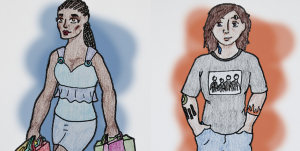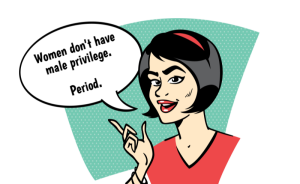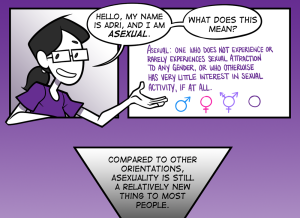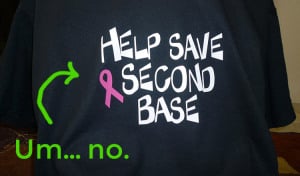Editor’s Note: While this list demonstrates the pervasiveness of rape by cis men against cis women, Everyday Feminism would like to note that sexual violence and rape culture affect trans and gender non-conforming people (as well as cis men) at an alarming rate. Rape culture is everyone’s issue, regardless of gender.
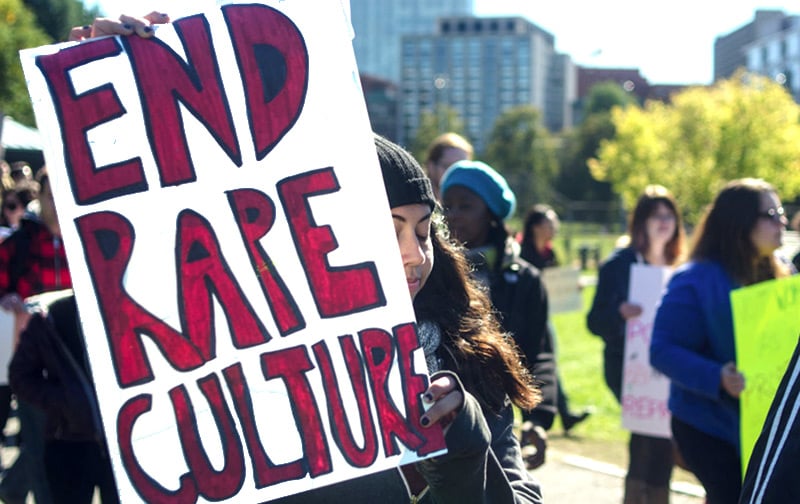
A person at a demonstration holds a sign reading “End rape culture.” Source: Chase Carter
Chances are, as feminists and other liberal-minded people, most of you have heard the phrase “rape culture.”
It’s used often in feminist circles, and it describes a very important social conditioning that we experience culturally.
But how many of you know what it actually looks like?
In reading through feminist forums and articles online, particularly in articles about rape or sexual assault, I notice that sometimes in the comments section, people make statements about how rape culture is just a phrase that’s made up to make men look bad or to make it seem like rape is something that happens far more often than it actually does.
And, given, after reading these comments, I could have easily dismissed them as just simply fodder written by online trolls and gone on with my day.
But it really got me thinking.
Perhaps some people truly don’t understand what rape culture is.
After all, if you’re hearing the phrase for the first time, it can be really confusing.
We understand the word “culture,” from a sociological or anthropological viewpoint, to be things that people commonly engage in together as a society (ranging from the arts to education to table manners), and we find it difficult to link the word “rape” in with that concept.
We know that at its core, our society is not something that outwardly promotes rape, as the phrase could imply. That is, we don’t, after all, “commonly engage” in sexual violence “together as a society.”
To understand rape culture better, first we need to understand that it’s not necessarily a society or group of people that outwardly promotes rape (although it could be).
When we talk about rape culture, we’re discussing something more implicit than that. We’re talking about cultural practices (that, yes, we commonly engage in together as a society) that excuse or otherwise tolerate sexual violence.
We’re talking about the way that we collectively think about rape.
More often than not, it’s situations in which sexual assault, rape, and general violence are ignored, trivialized, normalized, or made into jokes.
And this happens a lot.
All the time.
Every day.
And it’s dangerous in that it is counterproductive to eliminating sexual violence from society.
So what, exactly, does rape culture look like? How does it present itself?
Well, to see what I’m referring to, take a look at the examples below.
Because if we don’t understand the meaning behind the concept of rape culture, or if we have a skewed interpretation of the meaning in our minds, we may find it easy to deny its existence.
And you may think that some of these examples are isolated, one-off situations. But in reality, they’re part of a larger societal trend.
That is rape culture.
(Warning: These are not easy to digest, and as such, might make you uncomfortable. But seeing examples are necessary to comprehending fully what we mean when we talk about rape culture.)
Rape Culture Is…
1. A university in Canada that allows the following student orientation chant: “Y is for your sister. O is for oh-so-tight. U is for underage. N is for no consent. G is for grab that ass.”
2. Pop music that tells women “you know you want it” because of these “blurred lines” (of consent).
3. A judge who sentenced only 30 days in jail to a 50-year-old man who raped a 14-year-old girl (who later committed suicide), and defended that the girl was “older than her chronological age.”
4. Mothers who blame girls for posting sexy selfies and leading their sons into sin, instead of talking with their sons about their responsibility for their own sexual expression.
5. Photo memes like this:
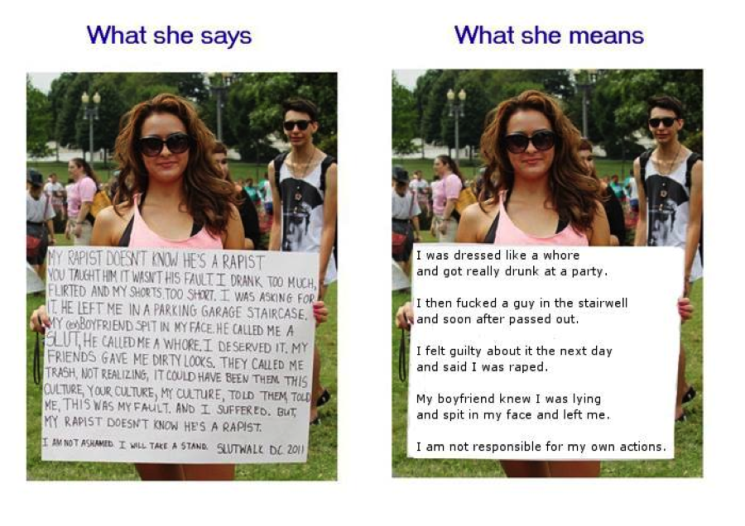
Source: Stupid Bad Memes
6. Supporting athletes who are charged with rape and calling their victims career-destroyers.
7. Companies that create decals of a woman bound and gagged in order to “promote their business.”
8. People who believe that girls “allow themselves to be raped.”
9. Journalists who substitute the word “sex” for “rape” – as if they’re the same thing.
10. Politicians distinguishing “legitimate rape” and stating that rape is “something that God intended to happen,” among other horrendous claims.
11. Calling college students who have the courage to report their rapes liars.
12. The ubiquity of street harassment – and how victims are told that they’re “overreacting” when they call it out.
13. Victims not being taken seriously when they report rapes to their university campuses.
14. Rape jokes – and people who defend them.
15. Sexual assault prevention education programs that focus on women being told to take measures to prevent rape instead of men being told not to rape.
16. The victimization of hospital patients, especially people with mental health issues and the elderly, by the very people who are there to protect them.
17. Reddit threads with titles like “You just have to make sure she’s dead” when linking to the story of a 13-year-old girl in Pakistan being raped and buried alive.
18. Reddit threads dedicated to men causing women pain during sex (I’m not going to give the thread credence by linking to it).
19. Twitter hashtags that support accused rapists and blame victims.
20. Publicly defending celebrities accused of rape just because they’re celebrities and ignoring or denouncing what the victim has to say.
21. Assuming that false reporting for sexual assault cases are the norm, when in reality, they’re only 2-8%, which is on par with grand theft auto.
22. Only 3% of rapists ever serving a day in jail.
23. Women feeling less safe walking the streets at night than men do.
24. 1-in-5 women and 1-in-71 men having reported experiencing rape.
25. The fact that we have to condition ourselves not to use violent language in our everyday conversations.
And the list could go on.
Because examples of rape culture are all around us. They permeate our society at individual, one-on-one levels, as well as in institutionalized, structured ways. That is, after all, exactly how oppression works.
I hope that after reading through the above examples, you have a clearer understanding of what is meant by the phrase “rape culture.” Moreover, I hope that you are more likely to believe in its existence – and to want to fight for its eradication.
Because now that you know what it is, you can work to find ways to prevent it.
What are some other examples of rape culture? Leave them in the comments.
[do_widget id=”text-101″]
Shannon Ridgway is from the great flyover state of South Dakota (the one with the monument of presidential heads). In her free time, Shannon enjoys reading, writing, jamming out to ’80s music and Zumba, and she will go to great lengths to find the perfect enchilada. Follow her on Twitter@sridgway1980. Read her articles here.
Search our 3000+ articles!
Read our articles about:
Our online racial justice training
Used by hundreds of universities, non-profits, and businesses.
Click to learn more
Most Read Articles
- « Previous
- 1
- …
- 30
- 31
- 32








